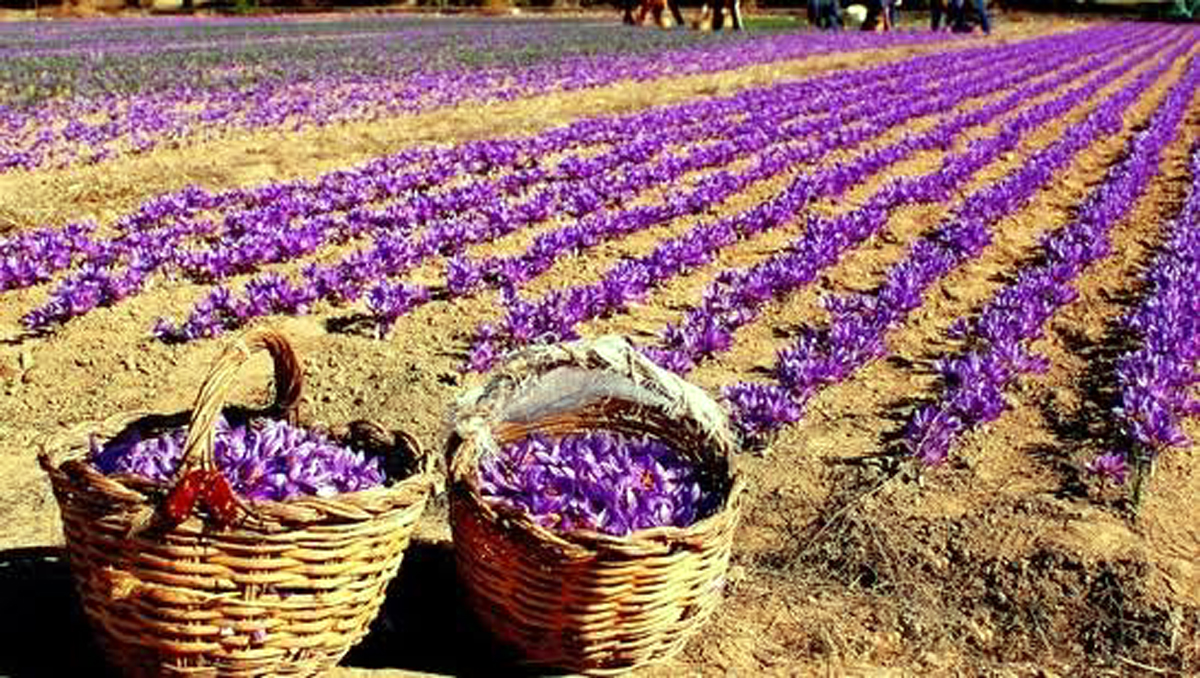Suhail Bhat
Srinagar Oct 30: Saffron growers are concerned about a significant drop in saffron production in recent years, which they attribute to the administration’s failure to operationalize irrigation facilities despite the passage of more than a decade since the scheme was launched under the National Saffron Mission.
Saffron growers, concerned about declining yields, have blamed successive Governments for the failure of National Saffron Mission’s( NSM). They said that harsh weather has harmed the crop for many years, and that crop yields have been falling due to a lack of irrigation facilities during the dry season. They said this year’s crop is expected to produce a low yield, as the area received less rainfall in the months of July and August, when the crop requires irrigation.
The Irrigation system consists of laying the water supply pipes and installing the sprinklers, and the entire system was being set up to manage the drought issues in the area. The establishment of an irrigation scheme was part of the Rs 400-crore NSM launched by the Government of India in 2010.
As part of the mission, 126 bore wells were supposed to be dug for irrigation purposes, but less than half have been completed so far. The scheme was launched by the Centre in collaboration with the State with the goal of increasing production from 3 kg to 5 kg per hectare, but it is yet to have an effect on the crop’s status.
The growers said that the irrigation system would have delivered water to the fields on time, allowing growers to avoid the drought that had been wreaking havoc on their yields for years. “Harsh weather has hampered the production of saffron. The irrigation system established as part of the NSM was never put to use. The Government is working hard, but the officers on the ground are not. Farmers are being forced to abandon this crop as a result of the decline”, said Fayaz Ahmad, a grower, adding that the drop is threatening the crop’s future as growers are unable to make the desired profits.
Saffron growers said that thousands of growers cultivating saffron on 3000 hectares of land would have taken advantage of the irrigation system and increased their output. “Due to a lack of rainfall, production is low, the yield is on the decline,” said another grower, Altaf Amin.
He said that his output has been declining for the past eight years. “Every year, I used to get 6-7 kilograms of saffron. Now I only get 1-2 kilograms”, he added.
He stressed that the Government should make irrigation facilities available for the growers. “The Government has laid the irrigation pipes here, but they could not operate it. They should have made it function around August,” he said.
Choudary Mohammad Iqbal, Director Agriculture, told Excelsior that they have asked the Government for a project extension to finish the remaining work. “The project has received at least three extensions, and we have requested another in order to complete the project’s outstanding portion. Level-1 and 2nd have been completed, and 3rd level is incomplete,” he said.
He pointed out that the Revenue department has failed to control the conversion of saffron land. “They have no control over the land,” he said, adding this is a heritage crop for us, and preserving it is top priority.


